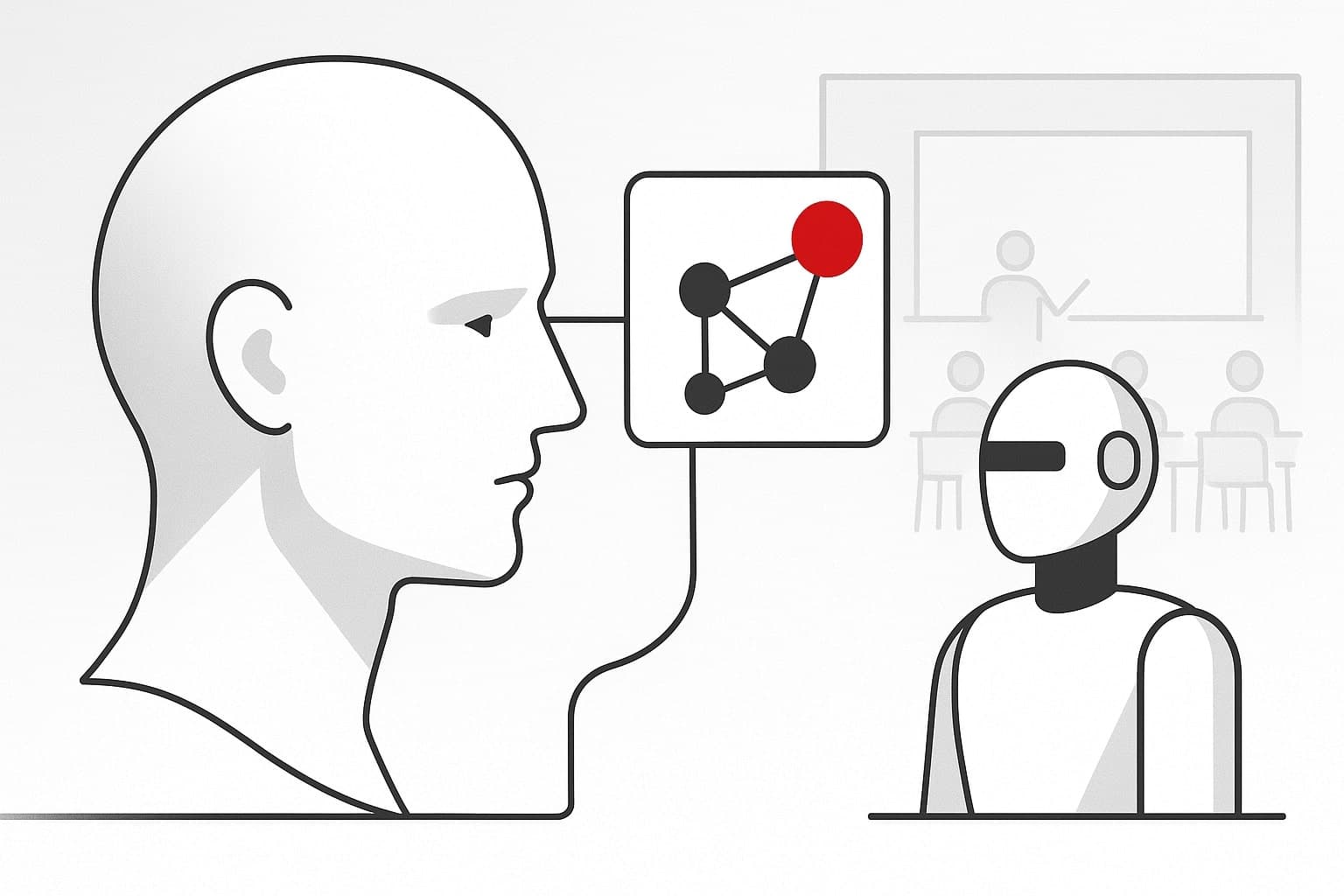October 15, 2025
Education

Artificial Intelligence is reshaping every industry — and education is no exception. From personalized learning paths to AI-powered grading systems, institutions are discovering that AI isn’t just a futuristic concept — it’s a practical tool for improving outcomes, efficiency, and engagement.
But while the promise is clear, the path to AI adoption is complex. How do schools, universities, and training institutes go from exploring AI to implementing it effectively in classrooms?
This blog presents a step-by-step AI adoption roadmap for educational institutions — combining strategy, technology, and pedagogy to ensure a sustainable transformation.
AI has the potential to transform the education ecosystem by addressing key challenges:
Personalization: Tailoring lessons to each student’s pace and style.
Efficiency: Automating administrative tasks to free educators’ time.
Accessibility: Supporting learners with disabilities or language barriers.
Insights: Providing data-driven feedback for better academic decisions.
According to UNESCO, over 80% of education leaders believe AI will play a critical role in student success within the next five years. The institutions that act now will set the benchmark for the future of learning.
Implementing AI isn’t about buying software — it’s about reimagining how education operates. Here’s a structured roadmap to guide your institution’s AI transformation.
Step 1: Define the Vision and Use Cases
Before jumping into tools, institutions must define why they want AI. Is it to improve teaching quality, enhance student engagement, or streamline administration?
Common AI Use Cases in Education:
Personalized Learning: AI tutors that adapt to each student’s progress.
Predictive Analytics: Identifying students at risk of dropping out.
Automated Grading: Reducing teacher workload for assignments and tests.
Virtual Teaching Assistants: Providing 24/7 student support.
Administrative Automation: Scheduling, attendance, and communication systems.
Example:
A university launched an AI-based advising tool that analyzed student performance to suggest personalized study plans — resulting in a 15% improvement in course completion rates.
Step 2: Assess Readiness and Data Infrastructure
AI thrives on data quality. Educational institutions need to evaluate their readiness by asking:
Do we have centralized, digitized data (attendance, grades, feedback)?
Are our data systems compliant with privacy regulations (like GDPR or FERPA)?
Do we have the right data storage and access policies in place?
Tools to Start With:
Learning Management Systems (LMS): Moodle, Canvas, Blackboard.
Data Platforms: Google BigQuery, AWS Data Lake, or Airtable.
Security Frameworks: End-to-end encryption and role-based access control.
Pro Tip: Start small — collect data from limited departments or pilot courses before scaling to the entire institution.
Step 3: Choose the Right AI Tools and Partners
The AI stack in education can include both ready-to-use and customizable solutions.
AI Tool Categories:
Learning Enhancement: ChatGPT, Squirrel AI, or Knewton for adaptive learning.
Assessment Automation: Gradescope or Turnitin for AI-assisted grading.
Virtual Assistants: Custom chatbots for student FAQs and administrative support.
Predictive Analytics Platforms: Power BI, Tableau, or custom ML models for decision intelligence.
Example:
A high school in Singapore integrated Gradescope AI into its LMS, reducing grading time for teachers by 50% while maintaining assessment quality.
Partnering with an AI implementation firm ensures smoother integration, scalability, and ongoing support.
Step 4: Pilot the AI Solution
Before scaling AI across the institution, run pilot programs in selected departments or courses.
Pilot Steps:
Define clear success metrics — e.g., improvement in student engagement, grading efficiency, or learning outcomes.
Train educators and staff to use the new tools effectively.
Collect feedback from teachers and students to refine the model.
Example:
A European university introduced AI-powered feedback tools in its online MBA program. Within three months, engagement rates increased by 22%, leading to a full-scale rollout.
Step 5: Train and Upskill Educators
Technology is only as effective as the people using it. AI adoption must include faculty upskilling programs to ensure teachers understand both the potential and limitations of AI.
Key Areas of Training:
Using AI tools for lesson planning and evaluation.
Understanding AI ethics and bias mitigation.
Incorporating AI insights into pedagogy.
Insight: Consider forming an “AI in Education Committee” to champion adoption and support continuous learning among faculty members.
Step 6: Ensure Ethical, Transparent, and Responsible AI Use
AI in education must be ethical, transparent, and student-centric. Institutions should build policies around:
Data Privacy: Ensure student data is anonymized and securely stored.
Bias Mitigation: Regularly audit AI models to prevent discrimination.
Transparency: Inform students and parents about how AI systems are used.
Example:
An Indian edtech startup implemented an AI recommendation system for learning paths and published an annual transparency report outlining algorithm updates and bias checks — building trust with parents and regulators alike.
Step 7: Scale, Measure, and Optimize
Once pilots prove successful, expand AI integration to more departments and processes.
Measure Impact Through:
Learning performance analytics.
Teacher productivity metrics.
Student satisfaction and retention rates.
Use continuous feedback loops to update models and tools, ensuring the AI system evolves with the institution’s goals.
1. Data Silos and Quality Issues:
Fragmented systems make data unusable for AI. Invest in data integration and cleansing early.
2. Resistance from Educators:
AI shouldn’t replace teachers — it should empower them. Communicate benefits clearly and involve educators in every step.
3. Budget Constraints:
Start with modular tools or cloud-based AI services. Many platforms now offer education-specific pricing and free tiers.
4. Ethical Concerns:
Establish an AI Ethics Framework aligned with institutional values and student welfare.
The journey from idea to AI-powered classroom isn’t about technology alone — it’s about vision, strategy, and people.
By following this AI adoption roadmap, educational institutions can create more adaptive, inclusive, and efficient learning environments that prepare students for the future.
If you’re ready to explore how AI can transform your institution, MLab Innovations can help you design, integrate, and scale AI solutions that make education smarter, fairer, and future-ready.
👉 Let’s build the classroom of tomorrow — today.